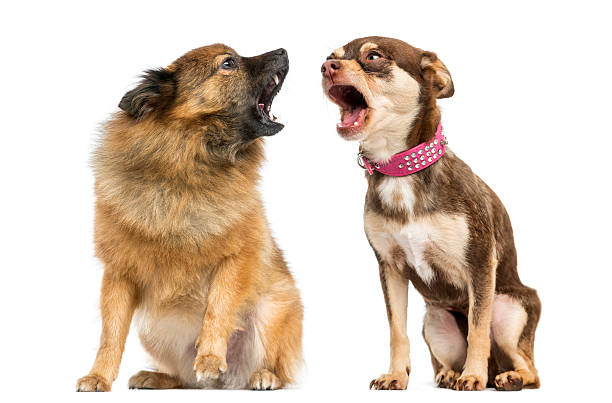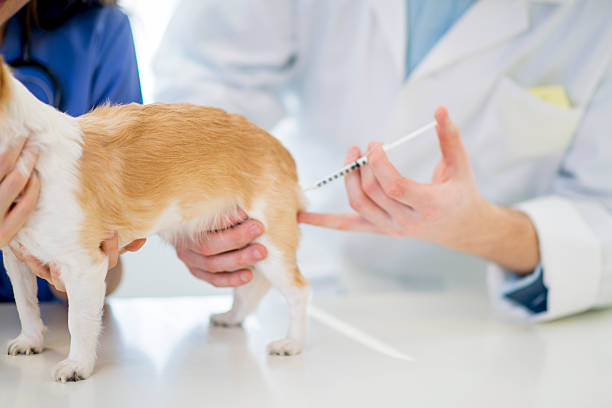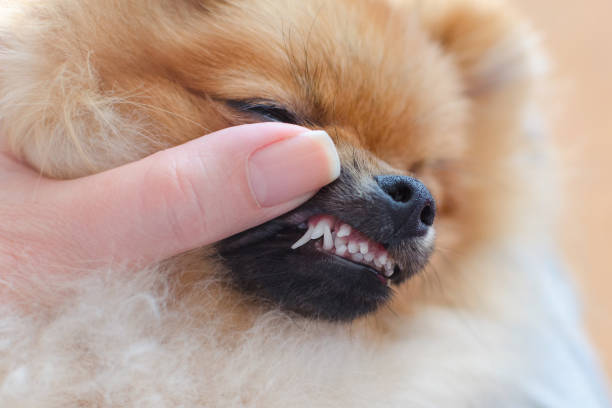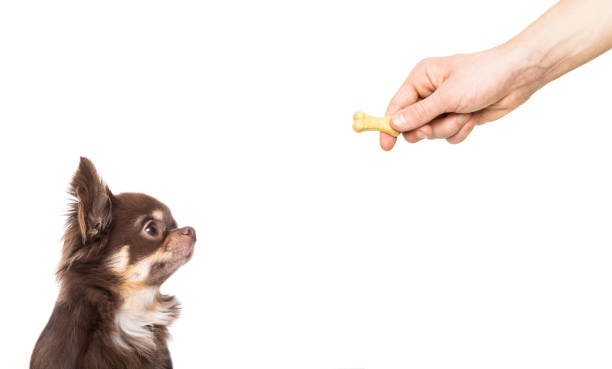
Your Chihuahua is losing appetite? Even if your dog’s behavior hasn’t altered, it’s essential not to overlook their appetite loss. Chihuahuas are affectionate, energetic, and empathetic companions who are extremely simple to care for and maintain because of their tiny size and low maintenance requirements. The quantity of food needed for a Great Dane will be much more than that required for a Chihuahua.
It is a dog with moderate demand for activity, so it does not need a large quantity of energy in calories. If you have chosen to adopt one and are interested in learning more about their nutrition, please continue reading this blog. Chihuahuas need a lot of food, and we will explain the substantial reason they won’t eat or drink.

Dogs may become unable to eat due to changes in their surroundings, stress, an inadequate response to a medication, or simply because they are nauseated. Dogs suffering from dental issues, discomfort, or internal blockages may find it challenging to eat. There is also a high possibility that your Chihuahua is just picky and is turning its nose up at the food you are giving them. Still, you must confirm this with your veterinarian and rule out any other potential reasons.
Is your dog refusing to eat? It isn’t enjoyable if you have ever had a dog that refuses to eat the food you have provided for them, as I have. As a result of their inability to communicate the reason for their pet’s lack of appetite, pet owners are understandably irritated and concerned. There will be a plethora of thoughts racing through their minds. Perhaps their dog is refusing to eat because they are ill, or maybe it is one of the indications that your dog’s health is worsening. Maybe they are just a picky eater!

The majority of dogs like eating; in fact, they’ll devour everything they can get their hands on, even your favorite food. It’s challenging to find a dog that will eat anything, whether dry kibble, wet food, dog treats, or even human food since they are so fussy. However, occasionally, a dog may lack appetite due to their anxiety about their owners. The fact that your dog isn’t eating right now may be due to several factors. Consuming just a tiny amount of food or refusing to consume any food at all does not always indicate the presence of a potentially deadly disease.

Stress, an unsettled stomach, or other environmental variables are all possibilities as to reasons for the occurrence. In contrast, if your dog hasn’t eaten anything for more than 24 hours, this may be one of the obvious signs that your puppy is ill. In any case, you should be on the lookout for any changes in your dog’s eating habits. If your dog isn’t eating as much as it used to, you should consult with your veterinarian to find out what’s wrong. You may be able to prevent your dog from getting even more ill due to your actions.
Causes Why Chihuahua Is Losing Appetite
A dog is refusing to eat maybe for several causes. Why do dogs refuse to eat? It may range from mild to extremely frightening.
1. Physical Environment Modification

If you recently moved with your puppy, it’s normal for them to skip one or two meals. They are unfamiliar with the new surroundings and maybe stressed by the change.
In particular, if you transport your dog to his new home, this is true. Some dogs experience motion sickness, which may cause them to lose their appetite for a few hours. Adopted dogs may also be experiencing an appetite issue. They’ve left their refuge or former residence to begin their new life in a new location.
2. Problems with Behaviour

Another possibility is that you’re feeding your pup at inconvenient hours of the day or night. If you place your dog’s bowl in the vicinity of an aggressive dog’s area, your puppy may get too nervous to eat. Make sure that the dog food is stored in appropriate places to avoid this from happening. Each dog should have an area where they may have a satisfying supper.
3. Vaccination within the last several months

Suppose you’ve just brought your puppy to the veterinarian to be vaccinated. In that case, this may be the reason why they’re not eating. Vaccines save the lives of hundreds of pups every year, but they may also have severe side effects on certain dogs, as has been shown. One of the less severe symptoms is a general lack of desire to eat. It usually diminishes after a few hours. However, it is relatively uncommon to skip one or two meals.
4. Dental Disease

It is a medical condition that affects the teeth. Is your dog refusing to eat? Did you know that one of the most frequent causes of tooth decay is dental disease?
If your dog’s mouth has health issues such as a broken tooth, a cut, or even infected gums, eating would be painful. It would help if you took them to the veterinarian for a checkup. Otherwise, it is conceivable that your puppy may refuse to eat anything, even canned food, until treated.
5. Discomfort in the stomach

Dogs are equally as interested as cats, and they will attempt to consume everything placed in front of them. It may include consuming socks, undergarments, wood, or even bugs in some instances. It will cause pain and discomfort in their stomach and intestines, as well as other symptoms. They won’t want to eat anything until whatever they ate that was unpleasant has gone through their system. It had all. If you see your puppy vomiting or having diarrhea, this may indicate that they are suffering from a gastrointestinal ailment.
6. Illnesses such as blockage or other ailments

A dog’s refusal to eat may also be a symptom of another underlying problem. Sometimes a dog may swallow a foreign item, such as a sock, which can cause its digestive system to get obstructed. If this is the case, it is common for a dog to cease eating.
In certain instances, though, there may be an additional cause for your dog’s refusal to consume food. Loss of appetite in dogs is a frequent sign of various severe illnesses and disorders, just as it is in people. Some factors may contribute, like Pyometra, why your dog or puppy is refusing to eat or drink.
What Is Pyometra
Pyometra is a highly severe womb infection, also referred to as the uterus in certain circles.
If left untreated, it may cause renal failure, toxemia, dehydration, and, in rare instances, death. It is because of the womb being swollen and filled with pus.
Usually, after a pet has developed pyometra, the only way to save its life is to perform emergency surgery to remove its womb. It is most evident in older female canines that have not undergone a neuter operation.
Cause:
A bacterial infection causes pyometra, most frequently E. coli, and typically arises a few weeks after a female has completed her breeding season. Being in season leads the animal’s body to undergo hormonal changes, significantly increasing the likelihood of infection.
Symptoms:
Although early indications may not always be visible, your pet may seem hungry, sluggish, or thirsty if they suffer from dehydration. Pets may have vaginal discharge from time to time, although this is not always the case.
As the illness progresses, your pet may get unwell and become unable to move around much at all. If you feel that your Chihuahua may be suffering from pyometra, call your veterinarian as soon as possible – acting may save their life.
Your veterinarian will inquire when your dog’s last season occurred, your Chihuahua’s hygiene activities, and how she has been behaving in recent weeks. Their assessment will include checking your dog’s belly for edema and perhaps doing an ultrasound examination.
Treatment:
The disease pyometra affects about one in every four older female dogs. Still, it may be avoided entirely by neutering your pet. But if your pet is already old, surgery is required to remove the diseased part of the womb since pyometra is such a severe illness.
The technique is identical to a regular spay of a healthy womb. However, there is a much greater chance that the diseased womb may break apart during the surgery, resulting in pus releasing, leading to further infection.
The doctor may remove an infected womb as soon as possible for the puppy to have the best chance of survival. Unfortunately, pyometra and complications that arise as a consequence of the high-risk procedures may be deadly.
Chihuahuas And Other Dogs Are Prone To Several Types Of Cancer
In contrast to many other kinds of animals, dogs are vulnerable to the same forms of cancer that affect people. On the other hand, cancer is due to the uncontrolled proliferation of cells in the body. These cells may come from any of the body’s tissues and spread throughout the body.
Suppose cancer is not detected and treated early enough. In that case, it may spread and link with the circulatory and lymphatic systems and infect then contaminate other tissues throughout the body.
According to the American Cancer Society, canine cancer is the top cause of mortality in dogs over ten years. However, suppose there are already clear signs of cancer in its early stages. In that case, it is possible to cure 50% of all canine cancers.
The Following Are The Most Frequent Forms Of Cancer In Dogs:
1. Hemangiosarcoma
An incurable tumor develops in the cells lining blood arteries, known as endothelial cells. Hemangiosarcoma may affect dogs of any age or breed. However, it is more prevalent in dogs that are middle-aged or old in their development. Additionally, some species, such as Golden Retrievers and German Shepherds, have a much greater frequency. We may thus suggest further screening of these breeds when they reach the age of five.
Because these kinds of canine cancer grow slowly, it is painless. Clinical symptoms do not typically appear until the tumors have progressed to the point where they are resistant to most therapies. A little more than half of all treated dogs live for more than six months, and many die from severe internal bleeding before they have a chance to get therapy.
2. Mast Cell Tumors
The mast cells are immune cells that are responsible for allergies in the human body. It may be present in many organs of the body. Still, the canine population usually develops tumors on the skin, accounting for about 20% of all cancers. They may vary from being relatively innocuous to being highly aggressive. Certain breeds of dogs are at a higher risk of developing this tumor, suggesting that genetics may factor in its development. Boxers, in particular, are at risk for this kind of cancer.
3. Lymphoma
This kind of canine cancer may afflict any breed of dog at any age, and it can harm any dog of any species. Lymph nodes (swollen glands) located beneath the neck, in front of the shoulders, and behind the knee are the most common manifestations of this condition. Sometimes, lymphoma may affect lymph nodes hidden within the body and are thus not visible from the outside, such as those located inside the chest or in the belly, and these cases are rare.
It may result in difficulty breathing as well as stomach difficulties. Dog cancer is curable if caught in its early stages, which is the case with this kind of cancer. Some of the breeds with a greater prevalence of lymphoma are Standard Poodles, Golden Retrievers, and Australian Shepherds, to name a few examples.
4. Osteosarcoma
This kind of canine cancer, known as osteosarcoma, is the most prevalent primary bone cancer in dogs, contributing to 85% of skeletal tumors. Although it mainly affects large old dogs, it may affect any breed or size. Osteosarcoma may grow anywhere, although it most often affects the bones around the shoulder, wrist, and knee. The main sign is limb lameness and edema that is unpleasant to the touch.
5. Brain tumors
Brain tumors are epileptic-like convulsions or other severe behavioral abnormalities, which are the sole clinical symptoms. CAT scanning and magnetic resonance imaging (MRI) may identify the tumor’s location, size, and severity.
However, surgical intervention is advisable if the cancer is operable, even though certain forms of oral chemotherapy and radiation treatment may manage some inoperable cancers.
6. Bladder cancer
Bladder cancer in dogs is a kind of cancer that affects the bladder. Some breeds are more susceptible to bladder cancer than others. It is a slow-growing canine cancer, and symptoms may not manifest themselves for three to six months. Urinary blockage and bleeding are also typical signs of this condition.
Non-spayed female dogs are at high risk for having malignant mammary tumors. Still, all-female dogs, regardless of their reproductive status, are at risk for acquiring malignant mammary tumors.
If cancer has not spread, choose a complete surgical removal. However, if cancer has spread, partial surgical removal is a must.
Malignant Histiocytosis is a kind of canine cancer that most often affects giant sports breeds. It is a rare disease that affects only a small number of people. Histiocytic sarcomas may sometimes manifest as numerous lesions in a single organ (often the spleen), spreading quickly to include several organs. Unfortunately, there has not yet been a proven successful treatment for this kind of canine cancer.
7. Squamous Cell Carcinoma
This kind of cancer is most often seen in the mouth and on the toes’ nail beds. The most frequent therapy is early identification and complete surgical removal of the tumor. Dogs with metastatic illness account for less than 20% of all cases. Despite the therapeutic measures, the SCC of the tonsils and tongue are very aggressive, with less than 10% of canines surviving for one year or longer.
8. Mouth and Nose Cancer
This is a widespread kind of canine cancer that affects the mouth and nose more than the body. A lump on the gums, bleeding, odor, and trouble swallowing are all signs of periodontitis. Because many swellings are cancerous, it is critical to get treatment as soon as possible. Dogs’ noses may also become cancerous due to the presence of cancerous cells. A nasal cancer diagnosis happens when there is bleeding from the nose, trouble breathing, or swelling of the face.
9. Melanoma
Melanoma is a kind of dog cancer that most frequently affects dogs that have dark skin. Melanomas are cancerous tumors that develop from pigment-producing cells known as melanocytes, responsible for skin color. Melanomas may develop in regions of hairy skin, where they typically show as tiny, dark (brown to black) lumps. Still, they can also appear as big, flat, wrinkled masses. Melanomas can also develop in areas of hairless skin. It is malignant melanoma that develops in the mouth or the distal limbs (often the toenail beds). It is an incurable illness.
When there are clear tumors, they have very frequently migrated to other body regions, making complete surgical excision of the tumors challenging.
10. Testicular carcinoma
It is a kind of canine cancer that occurs most often in unneutered dogs with retained testicles. With neutering, this kind of canine cancer may increase the chance of eliminating cancer.
The Early Symptoms And Signs of Cancer in Dogs
Some symptoms of cancer in dogs are simple to detect, while others are more difficult to detect. The signs of cancer in dogs may be very variable and rely on a variety of variables. The following list, on the other hand, lists some of the most frequent symptoms of cancer in canines:
- Disturbing smells are coming from the mouth, ears, or any other area of the dog’s body
- Disturbing discharge from the eyes, mouth, ears, or rectum.
- Swelling in the abdomen
- Wounds or sores that do not heal
- Weight loss that occurs suddenly and is irreversible
- Change in appetite
- Coughing or trouble breathing
- Lethargy or depression
- Modifications in bathroom habits
- Signs and symptoms of discomfort
Immediately schedule a veterinarian visit if you suspect your dog is suffering from cancer or other serious illness.
What To Do When Chihuahua Doesn’t Eat or Drink
It will depend on the reason for your dog’s refusal to eat as determined by you and your veterinarian as to what you can do to assist him. Your dog’s lack of appetite may be caused by an illness, in which case your veterinarian may prescribe a prescription diet to satisfy your pet’s nutritional requirements.

At the same time, the underlying condition is treatable. These diets are not often delicious, mainly if your dog is used to receiving frequent treats or eating human food. Always avoid depriving your dog of food if already sick to coerce it into eating the recommended diet. Instead, consult with your veterinarian to learn about other options. Veterinarians may give appetite-stimulating medicines, suggest syringe-feeding a liquid diet, or implant a feeding tube in more severe instances. For additional information, contact your local veterinarian.
Assume your dog’s lack of food is due to pickiness or pain at mealtime rather than a medical condition. In such a situation, you may do many things to urge your pet to eat more. These include the following:
- Reducing the number of goodies consumed.
- Feeding your pet on a regular schedule, which is typically twice a day at the very least.
- Turning mealtime into a pleasant time for your pet, for example, by playing with a toy that distributes food or rewarding your dog with food when he performs a trick.
- Taking your dog for a stroll before a meal is another good idea.
- Switch up your dog’s food schedule. It’s a good idea to feed your pet alone if you usually provide it with other animals.
- Alternatively, experiment with different bowls or plates at various heights to discover what your dog likes.
- For extra convenience, you could even place a few pieces of food on the floor close to the feeding dish.
- You might try a new kind of food for your dog, such as canned food, if you usually give him dry food.
- To make your dog’s food more attractive, mix a tiny amount of warm water into it.
Here at ILoveChihuahua, we share our personal experiences as owners of this feisty breed. We talk about recommended methods, dog supplies picks, and advice on common Chihuahua problems. Our goal is to promote responsible dog ownership, so there would be fewer Chihuahuas in shelters.


